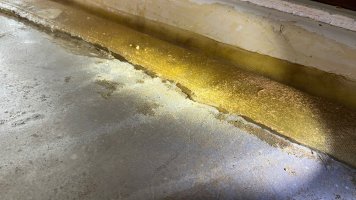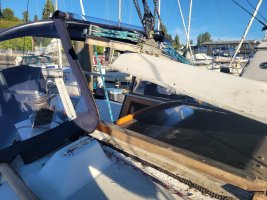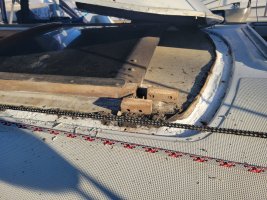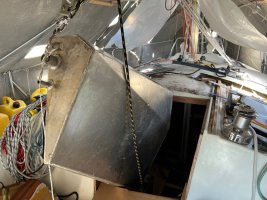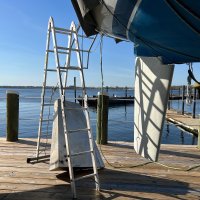Prairie Schooner
Jeff & Donna, E35-3 purchased 7/21
Hi David,Jeff,
Also. I think that you can separate the tape from the tank without cutting it. Use a putty knife or chisel and the bond will release. This would make reinstall even easier and no worries about cutting liner.
Did you need to remove your sea hood (which for me includes the traveler) to take out your companionway hatch?
- https://ericsonyachts.org/ie/threads/ericson-sea-hood-maintenance-and-removal.15407/
With Christian's post as a guide, I started digging into ours. It looks like we don't have the style that comes off by removing that little fascia.
Jeff

